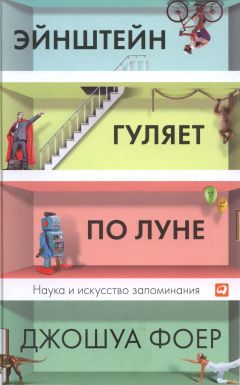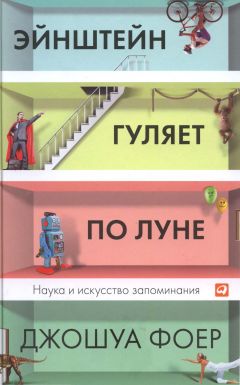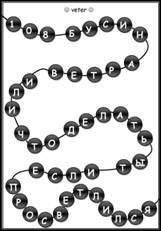Оливер Стоун - Нерассказанная история США
83. McMillan Priscilla J. The Ruin of J. Robert Oppenheimer and the Birth of the Modern Arms Race. – NY: Viking, 2005. – P. 142.
84. DeGroot Gerard J. The Bomb: A Life. – Cambridge, MA: Harvard University Press, 2005. – P. 179.
85. Text of Eisenhower Inaugural Address Pledging Search for Peace // New York Times. – 1953. – January 21.
86. Snow Edgar. Journey to the Beginning. – NY: Random House, 1958. – P. 360–361.
87. Ike Scouts Bomb as Full Defense // Baltimore Sun. – 1947. – February 25.
88. Rosenberg David Alan. The Origins of Overkill: Nuclear Weapons and American Strategy 1945–1960 // International Security. – № 7. – Spring 1983. – P. 27.
89. Kuznick Peter J. Prophets of Doom or Voices of Sanity? The Evolving Discourse of Annihilation in the First Decade and a Half of the Nuclear Age // Journal of Genocide Research. – № 9. – 2007. – P. 424.
90. The Central Problem // New York Times. – 1953. – September 19.
91. Immerman Richard H. Empire for Liberty: A History of American Imperialism from Benjamin Franklin to Paul Wolfowitz. – Princeton, NJ: Princeton University Press, 2010. – P. 164–172.
92. Pruessen Ronald W. John Foster Dulles: The Road to Power. – NY: Free Press, 1982. – P. 123–132.
93. Kinzer Stephen. Overthrow: America’s Century of Regime Change from Hawaii to Iraq. – NY: Times Books, 2006. – P. 114.
94. Adams Sherman. Firsthand Report: The Story of the Eisenhower Administration. – Westport, CT: Greenwood Press, 1974. – 364.
95. Prados John. The Sky Would Fall: Operation Vulture: The U. S. Bombing Mission in Indochina, 1954. – NY: Dial Press, 1983. – P. 30.
96. Memorandum of Discussion at a Special Meeting of the National Security Council on Tuesday, March 31, 1953, Foreign Relations of the United States, 1952–1954: Korea, vol. 15 (Washington, DC: U. S. Government Printing Office, 1984), 827.
97. Soman Appu K. Double-edged Sword: Nuclear Diplomacy in Unequal Conflicts: The United States and China, 1950–1958. – NY: Praeger, 2000). – P. 88.
98. Fred Kaplan, The Wizards of Armageddon (1983; reprint, Stanford, CA: Stanford University Press, 1991), 183–184.
99. Schlesinger Arthur M. Jr. The Cycles of American History. – B: Houghton Mifflin, 1999. – P. 401.
100. Chernus Ira. Apocalypse Management: Eisenhower and the Discourse of National Security. – Stanford, CA: Stanford University Press, 2008. – P. 96.
101. Folliard Edward T. U.S. to Use A-Weapons in Any War // Washington Post. – 1955. – March 17; President Says Atom Bomb Would Be Used like ‘Bullet’ // New York Times. – 1955. – March 17.
102. Record Shows U. S. Stands Ready to Use Its Nuclear Weapons Against Aggressor // New York Times. – 1956. – January 2.
103. Chernus Ira. Apocalypse Management: Eisenhower and the Discourse of National Security. – Stanford, CA: Stanford University Press, 2008. – P. 78–79.
104. Lanouette William. Looking Back: Civilian Control of Nuclear Weapons // Arms Control Today. – 2009. – № 5. – P. 45.
105. Text of Eisenhower’s Address to the U. N. Assembly // New York Times. – 1953. – December 9.
106. Baldwin Hanson W. Eisenhower’s Bid Hailed // New York Times. – 1953. – December 10.
107. Maddock Shane J. Nuclear Apartheid: The Quest for American Atomic Supremacy from World War II to the Present. – Chapel Hill: University of North Carolina Press, 2010. – P. 91.
108. Holloway David. Stalin and the Bomb: The Soviet Union and Atomic Energy, 1939–1956. – New Haven, CT: Yale University Press, 1994. – P. 349–350.
109. John Foster Dulles, “The Evolution of Foreign Policy”, Department of State Bulletin 30, no. 761 (January 25, 1954), 108.
110. Chamberlin William Henry. The New Strategy // Wall Street Journal. – 1954. – March 22.
111. Reston James. Washington: ‘Massive Atomic Retaliation’ and the Constitution // New York Times. – 1954. – January 17.
112. Kaplan, The Wizards of Armageddon, 212.
113. DeGroot Gerard J. The Bomb: A Life. – Cambridge, MA: Harvard University Press, 2005. – P. 190.
114. Leffler Melvyn P. For the Soul of Mankind: The United States, the Soviet Union and the Cold War. – NY: Hill and Wang, 2007. – P. 112.
115. Gardner, “The Dulles Years”, 391.
116. Kinzer Stephen. Overthrow: America’s Century of Regime Change from Hawaii to Iraq. – NY: Times Books, 2006. – P. 122.
117. Beisner Robert L. Dean Acheson: A Life in the Cold War. – NY: Oxford University Press, 2006. – P. 538; Kinzer Stephen. Overthrow: America’s Century of Regime Change from Hawaii to Iraq. – NY: Times Books, 2006. – P. 117–118.
118. The Ambassador in Iran (Grady) to the Department of State, July 1, 1951, Foreign Relations of the United States, 1952–1954, vol. 10 (Washington, DC: U. S. Government Printing Office, 1989), 80.
119. Yergin Daniel. The Prize: The Epic Quest for Oil, Money, and Power. – NY: Simon & Schuster, 1991. – P. 457.
120. Yergin Daniel. The Prize: The Epic Quest for Oil, Money, and Power. – NY: Simon & Schuster, 1991. – P. 458.
121. Westad Odd Arne. The Global Cold War: Third World Interventions and the Making of Our Times. – NY: Cambridge University Press, 2007. – P. 121.
122. Beisner Robert L. Dean Acheson: A Life in the Cold War. – NY: Oxford University Press, 2006. – P. 546.
123. Andrew Christopher. For the President’s Eyes Only: Secret Intelligence and the American Presidency from Washington to Bush. – NY: Harper-Collins, 1995. – P. 203.
124. The Ambassador in Iran (Henderson) to the Department of State, July 28, 1952, Foreign Relations of the United States, 1952–1954, vol. 10 (Washington, DC: U. S. Government Printing Office, 1989), 417.
125. Weiner Tim. Legacy of Ashes: The History of the CIA. – NY: Doubleday, 2007). – P. 86.
126. LaFeber Walter. America, Russia, and the Cold War, 1945–2006. – B: McGrawHill, 2008. – P. 162.
127. Gleijeses Piero. Shattered Hope: The Guatemalan Revolution and the United States, 1944–1954. – Princeton, NJ: Princeton University Press, 1991. – P. 150.
128. The Guatemalan Cancer // New York Times. – 1951. – June 8.
129. Red Cell in Guatemala // Washington Post. – 1952. – March 4.
130. Kinzer Stephen. Overthrow: America’s Century of Regime Change from Hawaii to Iraq. – NY: Times Books, 2006. – P. 134–135.
131. Cullather Nick. Secret History: The CIA’s Classified Account of Its Operations in Guatemala 1952–1954. – Stanford, CA: Stanford University Press, 1999. – P. 28.
132. Chapman Peter. Bananas: How the United Fruit Company Shaped the World. – NY: Canongate, 2007. – P. 131–132.
133. Immerman Richard H. The CIA in Guatemala: The Foreign Policy of Intervention. – Austin: University of Texas Press, 1982. – P. 181; Schlesinger Stephen C., Kinzer Stephen. Bitter Fruit: The Untold Story of the American Coup in Guatemala. – NY: Doubleday, 1982. – P. 137–138.
134. Cullather Nick. Secret History: The CIA’s Classified Account of Its Operations in Guatemala 1952–1954. – Stanford, CA: Stanford University Press, 1999. – P. 26.
135. Young John W. Great Britain’s Latin American Dilemma: The Foreign Office and the Overthrow of ‘Communist’ Guatemala, June 1954 // International History Review. – № 8. – 1986. – P. 575.
136. Weiner Tim. Legacy of Ashes: The History of the CIA. – NY: Doubleday, 2007). – P. 461.
137. Waggoner Walter H. U. S. Wants Rio Pact Inquiry on Arms Sent to Guatemala // New York Times. – 1954. – May 19.
138. Weiner Tim. Legacy of Ashes: The History of the CIA. – NY: Doubleday, 2007). – P. 98.
139. Guatemala Lifts Ban; Allows Times Correspondent to Re-enter Country // New York Times. – 1954. – May 21.
140. Gruson Sydney. U. S. Stand on Arms Unites Guatemala // New York Times. – 1954. – May 21.
141. Gruson Sydney. Guatemala Says U. S. Tried to Make Her Defenseless // New York Times. – 1954. – May 22.
142. Gruson Sydney. U. S. Arms Stand Alienates Guatemalan Foes of Reds // New York Times. – 1954. – May 24.
143. Kinzer Stephen. Overthrow: America’s Century of Regime Change from Hawaii to Iraq. – NY: Times Books, 2006. – P. 140.
144. Young John W. Great Britain’s Latin American Dilemma: The Foreign Office and the Overthrow of ‘Communist’ Guatemala, June 1954 // International History Review. – № 8. – 1986. – P. 584.
145. Kinzer Stephen. Overthrow: America’s Century of Regime Change from Hawaii to Iraq. – NY: Times Books, 2006. – P. 145.
146. Schlesinger Stephen C., Kinzer Stephen. Bitter Fruit: The Untold Story of the American Coup in Guatemala. – NY: Doubleday, 1982. – P. 206.
147. The Text of Dulles’ Speech on Guatemalan Upset // New York Times. – 1954. – July 1.
148. Young John W. Great Britain’s Latin American Dilemma: The Foreign Office and the Overthrow of ‘Communist’ Guatemala, June 1954 // International History Review. – № 8. – 1986. – P. 588.
149. Kinzer Stephen. Revisiting Cold War Coups and Finding Them Costly // New York Times. – 2003. – November 30.
150. Kinzer Stephen. Overthrow: America’s Century of Regime Change from Hawaii to Iraq. – NY: Times Books, 2006. – P. 147; Dulles Hails Upset of Reds // Chicago Tribune. – 1954. – July 1.
151. Roettinger Philip C. For a CIA Man, It’s 1954 Again // Los Angeles Times. – 1986. – March 16.
152. Westad Odd Arne. The Global Cold War: Third World Interventions and the Making of Our Times. – NY: Cambridge University Press, 2007. – P. 149.
153. Text of Talk by President Eisenhower at Governors’ Conference // New York Times. – 1953. – August 5.
154. Speech by Vice-President Nixon, December 23, 1953 // Conflict in Indo-China and International Repercussions: A Documentary History, 1945–1955 / Ed. Allan B. Cole. – Ithaca, NY: Cornell University Press, 1956. – P. 171.
155. Why U. S. Risks War for Indochina: It’s the Key to Control of All Asia // U. S. News & World Report. – № 4. – 1954. – P. 21.
156. Bundy McGeorge. Danger and Survival: Choices About the Bomb in the First Fifty Years. – NY: Vintage, 1990. – P. 267.
157. Prados John. The Sky Would Fall: Operation Vulture: The U. S. Bombing Mission in Indochina, 1954. – NY: Dial Press, 1983. – P. 145–157; Brodie Fawn M. Richard Nixon: The Shaping of His Character. – NY: W. W. Norton, 1981. – P. 322.
158. Marks Frederick W. Power and Peace: The Diplomacy of John Foster Dulles. – NY: Praeger, 1993. – P. 197, note 41.
159. Bundy McGeorge. Danger and Survival: Choices About the Bomb in the First Fifty Years. – NY: Vintage, 1990. – P. 78.
160. Schlesinger Arthur M. Jr. The Cycles of American History. – B: Houghton Mifflin, 1999. – P. 400.
161. Cat in the Closet // Chicago Tribune. – 1954. – April 13.
162. Roberts Chalmers M. Our 25 Years in Vietnam // Washington Post. – 1968. – June 2.
163. Immerman Richard M. John Foster Dulles: Piety, Pragmatism, and Power in U. S. Foreign Policy. – Wilmington, DE: Scholarly Resources, 1999. – P. 93.
164. Lippmann Walter. Surrender Demands by Both Sides Make Vietnam Settlement Difficult // Los Angeles Times. – 1965. – April 4.
165. Ryan William L. Real Leader Needed to Rally Vietnamese // Washington Post. – 1954. – April 24.
166. Morgenthau Hans. Vietnam Chief a Multi-Paradox // Washington Post. – 1956. – February 26.
167. Eisenhower Dwight D. Mandate for Change: The White House Years. – NY: Doubleday, 1963. – P. 372.
168. Wittner, Resisting the Bomb, 147.
169. Hartmann Robert T. AEC Chief Bares Facts on H-Bomb // Los Angeles Times. – 1954. – April 1; Text of Statement and Comments by Strauss on Hydrogen Bomb Tests in the Pacific // New York Times. – 1954. – April 1.
170. Chernus Ira. Apocalypse Management: Eisenhower and the Discourse of National Security. – Stanford, CA: Stanford University Press, 2008. – P. 87.
171. Maddock Shane J. Nuclear Apartheid: The Quest for American Atomic Supremacy from World War II to the Present. – Chapel Hill: University of North Carolina Press, 2010. – P. 96.
172. Chernus Ira. Apocalypse Management: Eisenhower and the Discourse of National Security. – Stanford, CA: Stanford University Press, 2008. – P. 88.
173. Bundy McGeorge. Danger and Survival: Choices About the Bomb in the First Fifty Years. – NY: Vintage, 1990. – P. 271–273.
174. Swenson-Wright John. Unequal Allies: United States Security and Alliance Policy Toward Japan, 1945–1960. – Stanford, CA: Stanford University Press, 2005. – P. 181. Полнее об этом см.: Kuznick P. Japan’s Nuclear History in Perspective: Eisenhower and Atoms for War and Peace // Bulletin of the Atomic Scientists. – 2011. – April 13. http: // www.thebulletin.org/web-edition/features/ japans-nuclear-history-perspectiveeisenhower-and-atoms-war-and-peace, или Toshiyuki Tanaka and Peter Kuznick, Genpatsu to Hiroshima – genshiryoku heiwa riyo no shinso (Nuclear Power and Hiroshima: The Truth Behind the Peaceful Use of Nuclear Power) (Tokyo: Iwanami Shoten, 2011).
175. Levey Stanley. Nuclear Reactor Urged For Japan // New York Times. – 1954. – September 22. – P. 14.
176. A Reactor for Japan // Washington Post. – 1954. – September 23. – P. 18; Hailey Foster. Tokyo Press Stirs Ire of Americans // New York Times. – 1956. – June 8.
177. Laurence William L. Now Most Dreaded Weapon, Cobalt Bomb, Can Be Built; Chemical Compound That Revolutionized Hydrogen Bomb Makes It Possible // New York Times. – 1954. – April 7.
178. Russ Reported Making Deadly Nitrogen Bomb // Los Angeles Times. – 1954. – April 9.
179. Cobalt Bomb’s Peril to All Life Stressed // Washington Post. – 1955. – February 14.
180. DeGroot Gerard J. The Bomb: A Life. – Cambridge, MA: Harvard University Press, 2005. – P. 198.
Глава 7. Джон Ф. Кеннеди: «Самый опасный момент в истории человечества»1. Shedding New Light on the Stalin Regime // Manchester Guardian. – 1956. – March 17.
2. DeGroot Gerald J. Dark Side of the Moon: The Magnificent Madness of the American Lunar Quest. – NY: New York University Press, 2006. – P. 64, 67–68.




